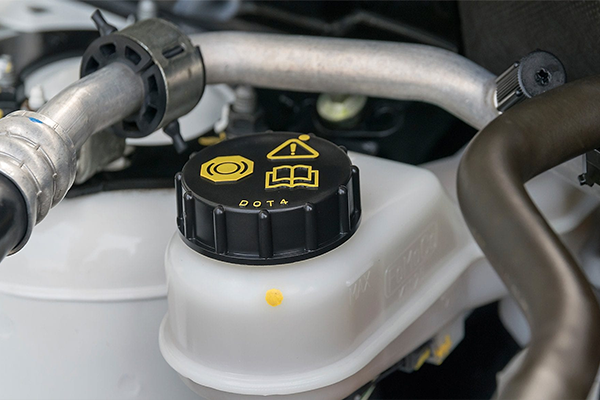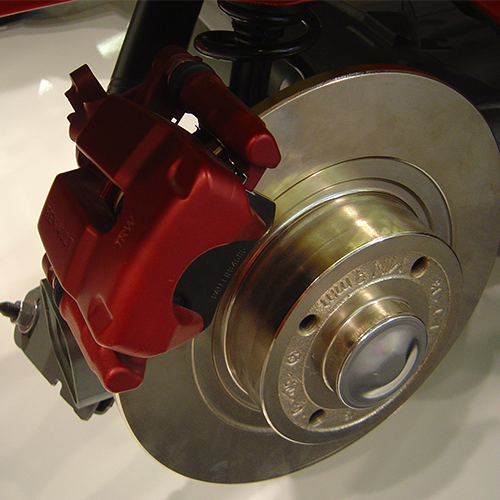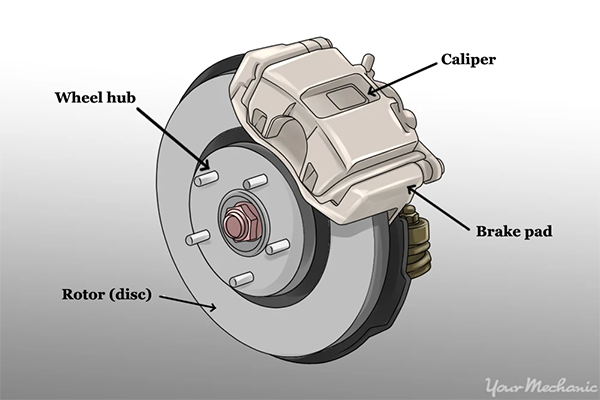Every vehicle is made out of multiple components, all designed to work in sync, harmony, and with perfection to make your ride as smooth as possible. Of course, some components are marked lower on the critical list, while some parts are absolutely essential to function or power the car. The engine, for instance, cannot take any kind of low-level maintenance or issues as that could lead to the complete failure of the machine. But a simple crack on the windshield can be delayed for a while.
Similarly, ranking high on the importance list is the car brake system. The entire safety of your car and its passengers is dependent on this system. It is important to have a faint idea of the working of the car brake system and how you can maintain it to enhance longevity.
Let’s look at the working of the Car Brake System before moving on to the maintenance points.
How does a car brake system work?
Your car brake system, though extremely important, only comprises a few components that help to get the work done collectively. In theory, there are two types of brakes – disc type brake or a drum-type brake. Most of the vehicles use disc brakes on all four wheels, however, some models may use the drum brakes on the rear wheels.
The only difference between the two is that the disc brakes make use of the brake pad which clamps down on the discs, bringing the vehicle to a stop. On the other hand, the drum brakes have shoes that push into the wheel to create friction, which eventually brings your car to halt. Since most of the ‘stopping’ relies on the efficiency of the front wheels, it is important to bring your car for regular brake service.
Taking an in-depth look into the car brake system, let’s understand how the brakes work to provide us with a smooth halt when we press on the pedals. The brake line follows from the master cylinder to the calliper and is filled with hydraulic brake fluid.
As you push the pedals with your foot, the force amplifies with the help of mechanical leverage and the brake booster. The piston pushes into the cylinder which forces the brake fluid out of the other end. Brake Fluid is a type of hydraulic fluid that is used in the automobile industry because of its non-compressible nature. It travels through the entire braking system with the help of brake lines and hoses, and the pressure is transferred to all four brakes.
The hydraulic force generates friction between the brake pads and disc brake rotors. The brake pads, in turn, contract to clip the rotors which eventually brings the car to a stop.
Now that you have understood how the car brake system works, let’s talk about brake maintenance and repair procedure.
Car Brake System – How to Maintain it?
If you’re opting for a full car service, your entire brake system will be inspected if it needs a car brake repair service. However, more often than not, your vehicle needs a simple maintenance task or a top-up that can enhance the working of the brake.
Here are some of the essential maintenance that your brakes must go through.
- Brake Fluid
Brake Fluid runs through the entire brake line, into the callipers and eventually transfers the pressure to the rotors and brake pads that bring your vehicle to a stop at the right time. Therefore, it becomes extremely crucial to maintain, top-up, and replace the brake fluid after fixed intervals.
Make sure you replace the fluid after every two years or after every 30,000 to 40,000 miles since it can attract moisture which is not good for the braking system. Check the fluid after 25,000 miles, ensuring it doesn’t have a cloudy or milky texture. A compromise on the brake fluid will affect all the components of the braking system. Furthermore, you should also keep a check on the fluid level, topping it up whenever necessary.
- Brake Discs
Brake Discs are an essential component of the brake system and you must replace them when they have run their course.
Their replacement time depends on your driving condition and how often you press on the pedals to bring the car to a stop. Moreover, upgrading or replacing the parts when they have worn-out will only lead to higher performance and longevity of the component. It is advised to replace the discs every 20,000-25,000 miles.
- Bleeding the Brake line
You already know that it is important to replace or top-up the brake fluid at regular intervals. However, we also need to flush out the air out of the brake system. This is known as Bleeding the brake lines. The small amount of air trapped between the brake line leads to a decrease in the efficiency of the system.
To do this, you should depress the brake pedal while someone keeps an eye on the bleeder valve. Once you see the brake fluid coming through the valve, it is time to close the valve. Make sure you’re doing this every 2-3 years, or during the maintenance routines.
- Brake Pads & Rotors
The Brake Pads and Rotors are an essential part since they connect the braking system with your tyres. As they are constantly subjected to pressure, friction, and heat, they are more prone to wearing down. Hence, Brake Pads and Rotors need frequent maintenance for optimum performance.
Some of the vehicles have easily visible brake pads whereas, in others, they are well concealed. However, it is very important to gauge the depth and quality of the pads, ensuring that they are efficient enough to provide sufficient resistance. At any point in time, the depth of the brake pads should be at least 3.5 millimetres.
While you’re inspecting the pads, you should also keep an eye on the rotors since they both are in contact. The rotors should have a smooth surface, and if there is a minor issue, you can have them resurfaced. However, in the case of bigger damage, it is very crucial to have them replaced.
Another tell-tale sign of worn-out brake pads and rotors is when you press the brakes, and it takes its own sweet time to come to a halt. Or when you notice a burning smell whenever you press on the pedals.
Keep a lookout for these signs.
- System Care
Most of the vehicles of today have a brake light on the dashboard which is triggered whenever there is a fault in the brake system. The light is turned on due to multiple reasons, and the best option would be to consult your service centre.
Other ways in which you can care for your car is to avoid any unnecessary and heavy braking, especially in wet weather where the brakes have to work extra hard. Furthermore, avoid carrying too much weight in your car as that would also impact and pressurize the brake system.
With this, we come to an end to our blog on car brake system working and maintenance. Keeping the above points in mind will keep the performance on the optimum level, and reduce the chances of failure.
Keep watching this space for more such content.












